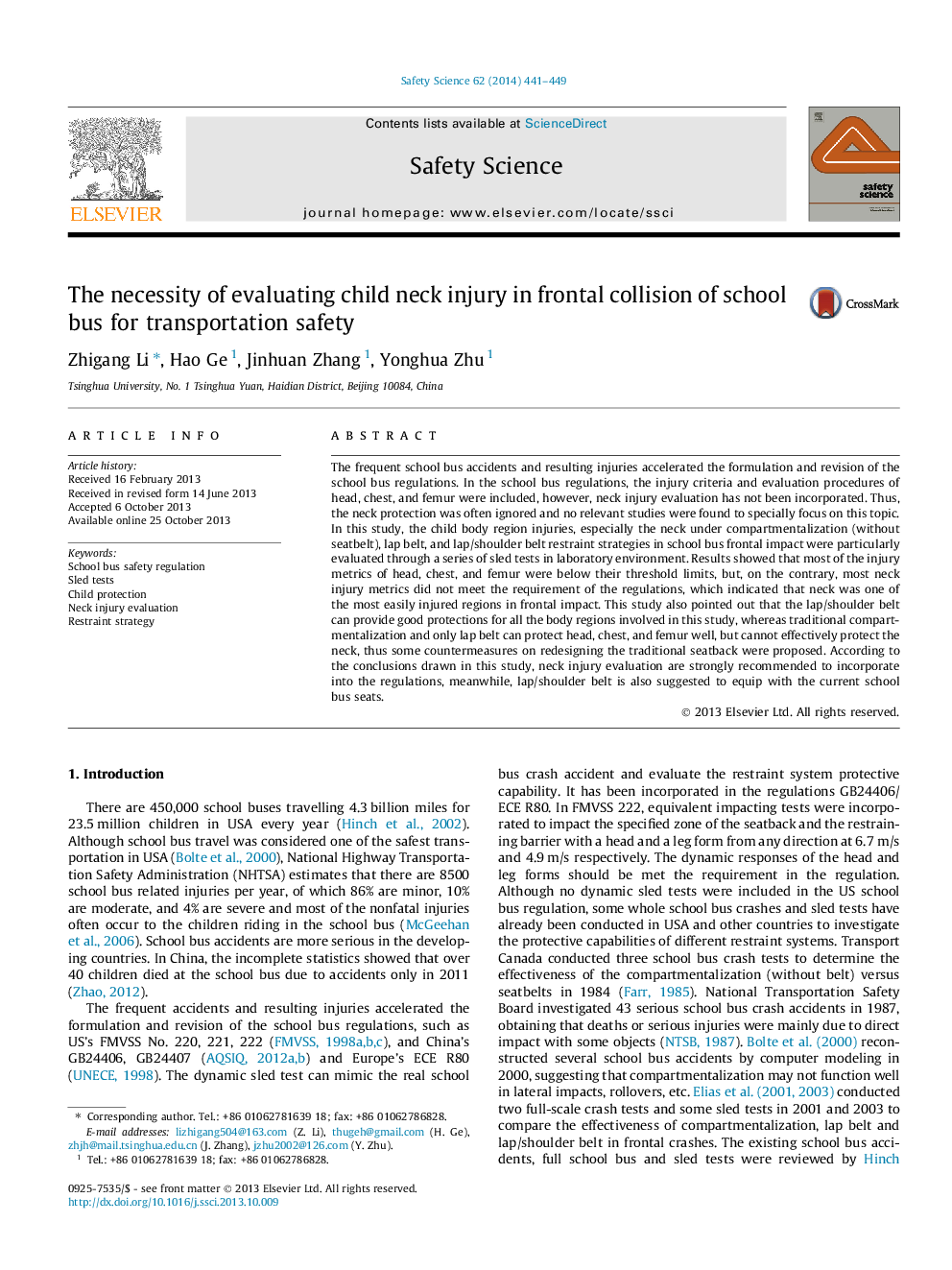| Article ID | Journal | Published Year | Pages | File Type |
|---|---|---|---|---|
| 589248 | Safety Science | 2014 | 9 Pages |
•School bus frontal sled tests were conducted to simulate real-world accidents.•Injury risks of different body regions and protective effect of different restraint systems were systematically compared.•Neck was found to be the most easily injured region compared with other body regions.•Countermeasures on redesigning the traditional seatback were proposed to better protect neck.
The frequent school bus accidents and resulting injuries accelerated the formulation and revision of the school bus regulations. In the school bus regulations, the injury criteria and evaluation procedures of head, chest, and femur were included, however, neck injury evaluation has not been incorporated. Thus, the neck protection was often ignored and no relevant studies were found to specially focus on this topic. In this study, the child body region injuries, especially the neck under compartmentalization (without seatbelt), lap belt, and lap/shoulder belt restraint strategies in school bus frontal impact were particularly evaluated through a series of sled tests in laboratory environment. Results showed that most of the injury metrics of head, chest, and femur were below their threshold limits, but, on the contrary, most neck injury metrics did not meet the requirement of the regulations, which indicated that neck was one of the most easily injured regions in frontal impact. This study also pointed out that the lap/shoulder belt can provide good protections for all the body regions involved in this study, whereas traditional compartmentalization and only lap belt can protect head, chest, and femur well, but cannot effectively protect the neck, thus some countermeasures on redesigning the traditional seatback were proposed. According to the conclusions drawn in this study, neck injury evaluation are strongly recommended to incorporate into the regulations, meanwhile, lap/shoulder belt is also suggested to equip with the current school bus seats.
